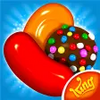Simple and challenging puzzle game
Simple and challenging puzzle game
Vote: (17 votes)
Program license: Free
Developer: PuzzleTouch
Works under: Windows
Vote:
Program license
(17 votes)
Free
Developer
PuzzleTouch
Works under:
Windows
Pros
- Simple, intuitive gameplay suitable for all ages
- Difficulty levels that include rotation challenge
- Momentum physics add a realistic feel
- Automatic snapping of puzzle pieces
- Ability to personalize puzzles with user-generated content
Cons
- Mouse controls are less satisfying than touch interaction
- Small puzzle pieces can become obscured, adding slight frustration
- Potential for repetitive gameplay
PuzzleTouch, the engrossing jigsaw puzzle game designed for Windows 8, offers users an immersive and somewhat nostalgic gaming experience brought into the digital age. This game translates the simple joy of physical puzzles into an interactive platform, enhanced with features well-suited to touch devices.
Intuitive Gameplay and Design
PuzzleTouch is built around a straightforward concept: assemble puzzles as accurately and quickly as possible to score points. But don't be fooled by its simplicity – the game offers a compelling challenge through its various difficulty levels. The easiest setting caters to beginners or those seeking a relaxed experience. As players progress to medium and hard levels, however, the game introduces rotated pieces, adding a layer of complexity. These rotations mean that players must discern the proper orientation of each piece, not just its location.
Although the game shines on touch-enabled devices where the tactile interaction mimics the hands-on feeling of traditional puzzles, it can still be operated with a mouse. Although functional, the mouse control lacks the intuitive feel of directly manipulating puzzle pieces with your fingers, resulting in a slightly less engaging experience.
Immersive Physics and Enhanced Interaction
One of the game's core delights is its emulation of momentum physics. PuzzleTouch allows players to flick pieces across the screen, which brings an element of reality to the virtual puzzle-solving and can also provide a satisfying sense of speed when assembling sections. Additionally, the feature of auto-snapping is a welcome quality-of-life improvement. When two compatible pieces find themselves near each other, they seamlessly click into place, thus saving time and minimizing frustration.
Besides, the workspace is generously sized, granting ample room to spread out pieces and strategize. This is particularly helpful when dealing with puzzles of higher difficulty, which come with more pieces that require close inspection and sorting.
Personalized Puzzle Adventures
Stepping up the customization game, PuzzleTouch invites players to inject personal touches into their puzzles. Through importing personal images or capturing new ones with a tablet's camera or a webcam, players can continually refresh their gaming experience. This feature not only increases game longevity but also adds emotional value to the puzzle-solving endeavor, as players piece together familiar scenes or cherished memories.
Minor Challenges and Improvement Opportunities
One on-going challenge within PuzzleTouch is managing numerous small pieces on-screen, especially when larger pieces might overshadow them. This can occasionally lead to a somewhat tedious and time-consuming task of locating and organizing these elusive smaller pieces.
While PuzzleTouch could be critiqued for becoming repetitive over time, the potential for repetition is a characteristic trait of the puzzle genre itself. Puzzle enthusiasts often find delight in the very repetition that breeds mastery and relaxation.
Conclusion
PuzzleTouch stands out as an appealing digital recreation of classic jigsaw puzzles. Its accessible gameplay, combined with the adoption of physics and personalization features, enriches the traditional puzzle experience. The game's flair for the modern touch interface is evident, although some improvements could amplify its appeal for non-touch users.
Pros
- Simple, intuitive gameplay suitable for all ages
- Difficulty levels that include rotation challenge
- Momentum physics add a realistic feel
- Automatic snapping of puzzle pieces
- Ability to personalize puzzles with user-generated content
Cons
- Mouse controls are less satisfying than touch interaction
- Small puzzle pieces can become obscured, adding slight frustration
- Potential for repetitive gameplay

